Modern Wargaming With “Force-on-Force” Part Four – Vehicles & Supplements
February 29, 2016 by crew
Welcome to the last instalment in our Force-on-Force article series by Beasts of War community members @unclejimmy and @oriskany. So far we’ve overviewed the game system in Part One, examined Morale and Irregular Forces in Part Two, and Casualties and Scenarios in Part Three.
In our final article, we wanted to wrap things up with a look at the great range of support and supplement materials available, allowing the player to really take his Force-on-Force experience around the world. We also take a quick look at how vehicles work in Force-on-Force. After all, is it REALLY a wargame without tanks?
Supplements
“Modern War” is a big topic, and no wargame rulebook could realistically hope to cover its full spectrum between just two covers. Accordingly, Force-on-Force is supported by a broad range of books, each of which expands on the particular nuances and conditions of a given conflict.
Ambush Alley: Vietnam 1965-1975 - This sourcebook allows players to recreate engagements of the Vietnam War. While the “classic factions” are naturally represented (Viet Cong, NVA, US Army, and US Marine Corps), so are ANZACS, ROK troops of South Korea, and South Vietnamese forces. Special rules include Vietnamese tunnels, river battles, night fighting, and booby traps.
Bush Wars: Africa 1967-2010 - The Middle East is often regarded as the world’s most war-torn region, but a closer look reveals that Africa may in fact claim this sad title. This book contains information on the national armies, insurgencies, and foreign “peacekeepers” of Africa’s many wars, enough to keep a wargamer busy for years.
Classified: Special Operations Missions 1940 -2010 - Let’s be honest, the reason to do skirmish-level modern combat is to play special forces. With missions dating back to the early stages of World War II, this book explores the increasingly important role of covert ops carried out by “armies” that the world never sees.
Cold War Gone Hot: World War III 1986 - The ultimate “modern war,” the one that’s never happened … yet. With this book you can create Force-on-Force games that depict hypothetical battles in West Germany, a Soviet Invasion of Alaska, or a host of other “Red Storm Rising” scenarios. Wolverines, forever!
Day of the Rangers: Mogadishu 1993 – On a much more serious note, we have this supplement which provides information for the firefights and engagements that have raged through Somalia for at least the last twenty years. Although this book focuses more on the infamous Battle of Mogadishu in October 1993, even today this country remains an undeniable hotspot.
Enduring Freedom and Operation Uruzgan – These supplements have to do with the “War on Terror” that dominated the first decade of this century. First, Enduring Freedom covers America’s invasion of Afghanistan to fight Taliban insurgents and al-Qaeda terrorists. Next, Operation Uruzgan covers Australia’s involvement in the Afghanistan War.
Road to Baghdad: Iraq 2003 and Fallujah: Iraq 2004 - Finally we come to the supplements that cover the Iraq War, starting with the Coalition’s initial invasion of Iraq in March of 2003. We then have a sourcebook that allows players to recreate US Army and US Marine Corps operations in the bloody Battle of Fallujah in November, 2004.
Vehicles
Modern warfare is, at least most of the time, supposed to be a mechanized and motorized business. It’s actually quite shocking how often this ISN’T the case, but the fact remains that vehicles are a major part of modern warfare. Accordingly, Force-on-Force ensures that vehicles can play a vibrant, detailed part in your tabletop game.
Vehicles, in Force-on-Force, are handled in two basic types: wheeled and tracked. They activate like any infantry unit, and also have two basic speeds (tactical, 10” and rapid, 20”). Just remember that most Force-on-Force games represent a skirmish area 150-200 feet across. This isn’t the place for 3000-metre tank gunnery duels.
Many Force-on-Force tables are also loaded with very close terrain, like the streets of Fallujah, the ruins of Grozny, or the mountain passes of Afghanistan. This accounts for the relatively slow speed of vehicles - not even double that of an infantry squad) – despite the fact that many of these vehicles can easily exceed 50 mph (80 kph).
Still, these vehicles can also be incredibly resilient. While an insurgent “technical” (truck with some “A-Team” plating and machine guns welded on it) only has a basic 1d6 or 2d6 defence, MBTs like the M1A1 Abrams or Challenger II can crank this up to 4d12, before reactive armour, smoke grenades, or other defensive bonuses.
Also, when it comes to firepower, few options bring more to the table than a main battle tank, an APC, or even a HMMWV loaded with .50 calibre machine guns. In Force-on-Force, how effectively this firepower can be brought to bear has a lot to do with whether the commander is “buttoned” up, or locked up safe with all hatches closed.
Unbuttoned commanders (standing up in their turrets, gunnery hatches) can see and engage targets very rapidly. However, they’re also very vulnerable. Buttoned up commanders are quite safe, but their vehicles suffer a -1 penalty to all reaction tests.
This explains why, in many movies and documentaries, we see infantrymen spraying oncoming tanks with their small arms. While admittedly desperate, this is far from pointless. If an enemy commander can be hit, or even forced to button up (or remain buttoned up), the tactical effectiveness of the tank is drastically reduced.
One of the best parts of vehicles in Force-on-Force is the damage system. Depending on class of vehicle being hit (light, medium, or heavy), and the class of gun being used (again, light medium heavy), you get nine possible lists of results, which are then rolled against with a d12.
All kinds of results can be rolled, far more than the usual “killed” or “saved.” Optics can be damaged, tracks can be broken, guns can be knocked out, or crew can be hurt. Massive ammo and fuel fires (the dreaded “brew up”) are also possible, as are “catastrophic kills” (simply put: ka-boom).
Even if a vehicle is wrecked, under most circumstances the crew gets a passable chance at survival. In our Ukraine battles, we had a 3-man crew successfully bail out of a wrecked BMP. The slight-wounded gunner helped get the badly-wounded driver to safety, while the unscratched commander picked up an AKSU carbine and joined the firefight outside!
Debriefing
In closing, we just wanted to take the opportunity to thank everyone who’s supported us in this effort. Foremost, this includes the Beasts of War team for letting us publish on their site, particularly @brennon and @lancorz for their help, patience, and hard work in making these articles look so great on “the Beast’s” front page.
We’d be remiss, however, if we didn’t also thank everyone who’s taken the time out of their busy gaming day to read and support our articles. It isn’t easy, we know, to plough through our aimless ramblings and bestow gentle and encouraging commentary on our humble efforts. As always, thank you.
For now, we’ve come to the end of our journey into the fiery world of Force-on-Force. Hopefully this is just the beginning of your journey, however. Or, if you’re a Force-on-Force veteran (or any system that specializes in modern-era wargaming), please share some of your own experiences in the comments below.
If you would like to write an article for Beasts of War please contact us at [email protected] to find out more!
"Force-on-Force is supported by a broad range of books, each of which expands on the particular nuances and conditions of a given conflict..."
Supported by (Turn Off)
Supported by (Turn Off)
"Accordingly, Force-on-Force ensures that vehicles can play a vibrant, detailed part in your tabletop game..."
Supported by (Turn Off)































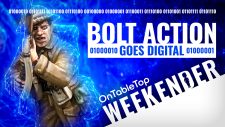
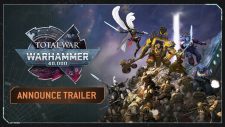
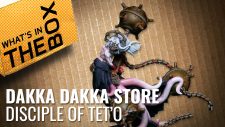
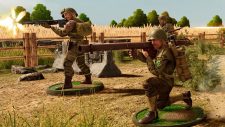

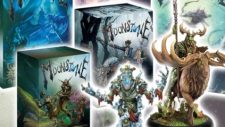




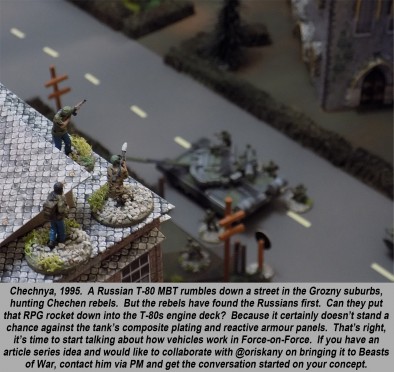
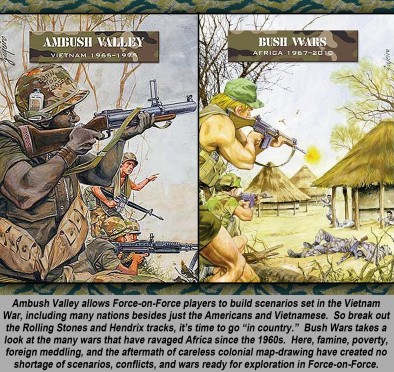
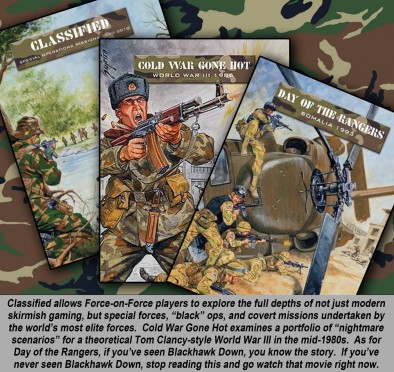
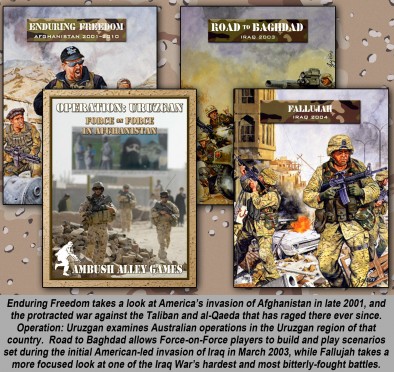
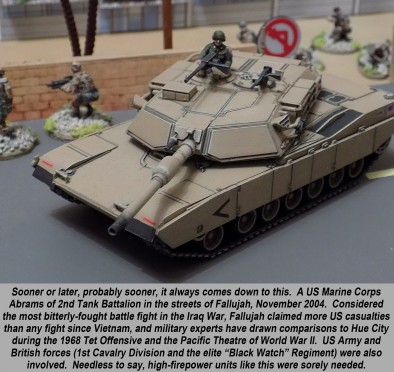
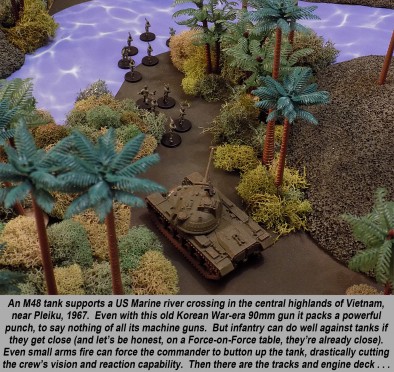

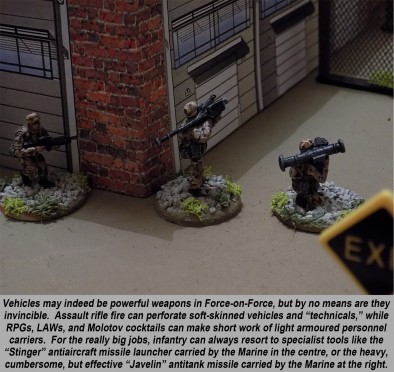
























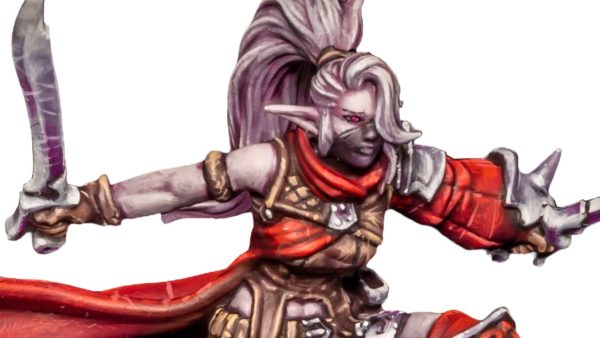
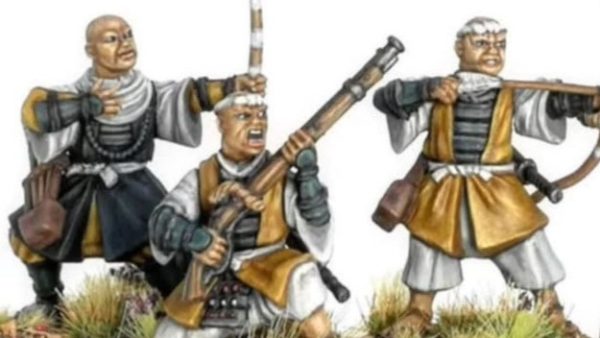
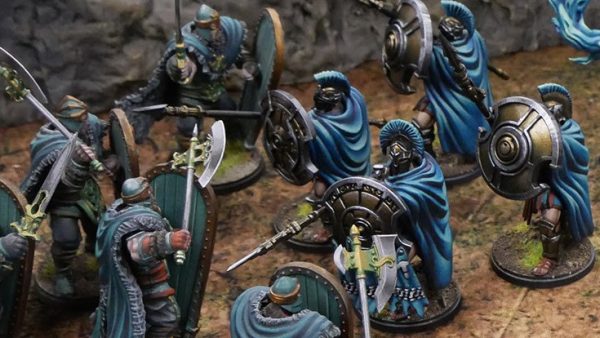
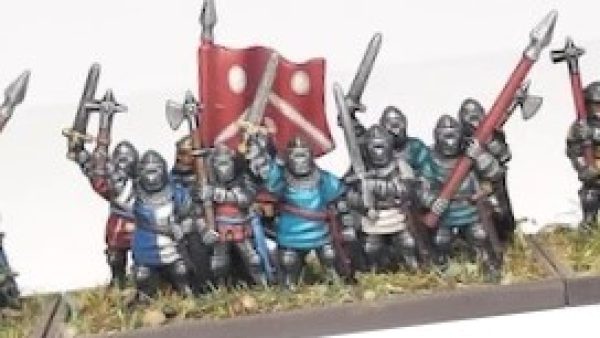
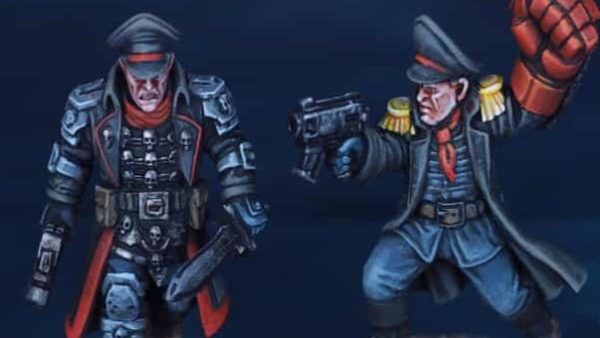



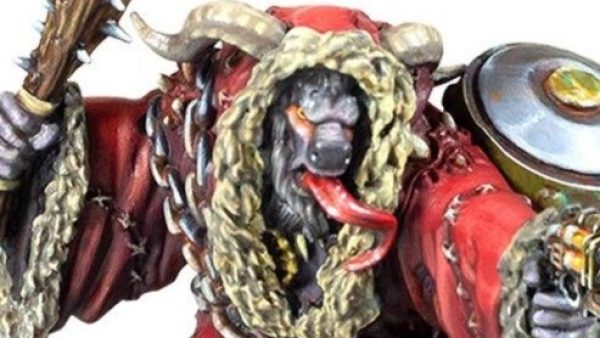
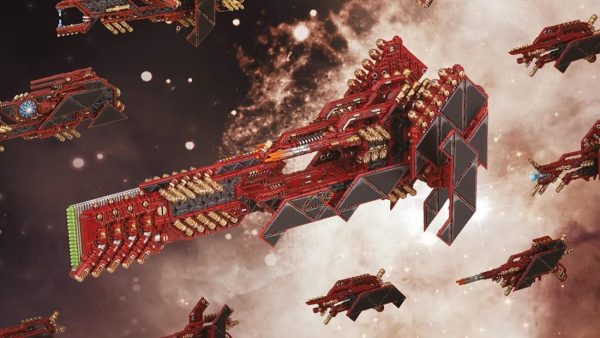
Great article series, chaps. Makes me want to order some Ruperts from Empress and maybe a Warrior…ah if money was no option… 😛
Thanks, @crazyredcoat . Warrior is indeed a badass looking vehicle. Broadly similar to the M2 Bradley, but somehow the Warrior looks “meaner.” I’d have to do some research before making a point-by-point comparison.
Just had a quick look myself, and the Warrior is actually (VERY slightly) smaller than the Bradley, though it’s current 30mm Cannon is bigger than the Bradley’s 25mm Cannon. Warrior is supposed to be getting upgraded with a 40mm Cannon, though. Bradley is heavier, too. Maybe ‘Warrior’ just sounds more intimidating than ‘Bradley’. 😛
The only actual edge I think I would give the Bradley is the TOW missile launcher. Although I don’t know if this would ever come into play in Force-on-Force game, a table is usually only about “200 feet” long and I think this lies within the TOW’s minimum engagement range.
The Warrior seems to carry an extra soldier (7 vs 6 … *gasp!* Don’t tell me APCs are supposed to … you know … carry personnel??), although new the variant of the Bradley is supposed squeeze an extra guy in there. “Okay, men! Who’s the skinniest sumbitch in the platoon? Come on, we got room for one more!”
I just like the Warrior’s sharper nose, and the bigger muzzle brake on that cannon. 😀 Strictly cosmetic preferences, of course.
I’ve never been in either, so everything is cosmetic to me, mate. 😛 All I know is I like tanks. I used to know a lot about the Warrior, but I have to double check most of it these days. 😛
Just about to order some British!
Well done gentlemen! 🙂 Congrats on another great series @oriskany, and a fabulous debut @unclejimmy .
The armoured system seems simple enough. Someone may have already asked this, but how well does this game scale up, to say company level?
Also, you said there was a future version. Any chance of seeing that system explained a bit better… without @oriskany having to paint sci-fi stuff? 🙂
Thanks very much, @cpauls1 . 😀 The system for vehicle damage is relatively detailed, we couldn’t go into it in full depth here because of space constraints. There are light, medium, and heavy antitank weapons, and light, medium, and heavy vehicles. Once an attack roll is made and compared against the proper facing of the vehicle’s armor, there are nine possible tables to roll on (three general weapon classes compared against three possible vehicle classes), with each successful hit getting a d12 check on the appropriate table.
Obviously, because there are nine potential tables to roll on, an RPG has a very range of possible damage effects with those d12s on a soft-skinned technical, rather than say . . . a Challenger II.
Actually, I think there are more permutations to take into account factors such as soft-skin vehicles, open-topped vehicles, etc.
Whereas in most company-level games, it’s spot, to-hit, penetrate. A vehicle is either rendered combat ineffective, bailed / immobilized, or survives.
So I guess the summary answer is, I don’t think Force-on-Force would scale up that high (of course everyone has a different definition of what a “company” is), but I’ve honestly never tried it. By biggest games had a total of 40 men and five vehicles on the table, and that was BOTH sides. 🙂
Thanks again!
Done already ? 🙁
Great job.
It’s always nice to read about various (war)games at this level of detail.
I kind of hope the Battlegroup series is up next 🙂
Anyways.
Do the books explain military acronyms and tactics to civillians ?
Are there any resources that cover this stuff from the wargaming newbie point of view ?
Battlegroup is definitely a favorite game of mine. 🙂
Yes, the book does have a glossary of commonly used military acronyms.
I’m trying to beat @oriskany and @unclejimmy into doing a Battlegroup series of articles…
I might give them a few pics and a sneak peek at what’s coming up next too.
Better that you do them then me! My next thing is going to be about wargaming the Soviet/Afghan invasion. Now that everything is settling down (and my tax is all sorted out) I want to get back to ‘normal’.
I will be waiting for a Battlegroup article – there is bound to be something I have either missed or didn’t consider…
Hey, look who’s back! 😀 Welcome, sir. Glad to hear things are settling down.
So you’re doing Soviet-Afghan War and Tomorrow’s War? 🙂
I’ll start the Force-on-Force “parallel” forum thread soon, perhaps today.
This makes me want to play Force on Force
Then do it! I had promised @oriskany an AAR, to post as a separate thread, but real life got in the way. I hope to be able to sort it out before the weekend.
Glad you enjoyed the articles – it is a fantastic game, maybe the best set of rules I have ever used in 31 years of gaming. Well worth the cost.
Looking forward to the AAR. Like I said, I’ll get the thread started with materials and photos that couldn’t fit in the articles. Just add your AAR when you get the chance. Here’s where you show off everything I had to cut! @unclejimmy ‘s revenge! Bwahaha! 😀
Thanks, @lee337 . That’s what we were hoping to do with these articles. 🙂
A couple of friends and myself have been playing FoF for some time now, mainly using Day of the Rangers and its a lot of fun, great article series :o)
Awesome, @cousins286 ! I haven’t tried this supplement yet. Like we were saying on a previous thread, I don’t have any 1/72 Blackhawks yet. 😀
Glad you liked the series. Hopefully we didn’t get anything too wrong. 😀
Never tried that setting, but it is a good supplement. My favourite has to either ‘Fallujah’ or ‘Operation Enduring Freedom’. O:EF has some great little additions for fighting in fields and for Taliban fighters. ‘Fallujah’ has a stunning set of mechanics for house/compound clearing and for fighting MOUT combat. Much better mechanic.
Nice to find some other players!
A nice series guys are the French covered in the nam book?
No Indochina in the Vietnam book… I ran out of room.
Thanks very much, zorg, piers, and rasmus. 😀
Oh, and I realize now I forgot to address one aspect of @cpauls1 ‘s question – I believe @unclejimmy would be your man on the “Tomorrow’s War” sci-fi aspect. Someone’s gonna have to buy, build, and paint the miniatures, though. I don’t have any of those kinds of models in my collection. 🙂
…orders have been placed!
Well written as always – 5 M1A1s might be too much for the game. …
Oof! Yes, @rasmus, I believe it might be. 😀 Although I don’t have the Cold War Gone Hot book personally, so I can’t say for certain.
“After all, is it REALLY a wargame without tanks?”…CLASSIC
I love all the “extra” scenarios…Special Ops., Lesser known/played theatres, it all adds up to some nice seasoning in the game.
Tanks, tanks, must have taaaaaanks! 🙂
In all seriousness, though, I’ve found that FoF works best primarily as an infantry skirmish game, with AFVs occasionally added in for flavor or to add something new. Of course, personal preference always comes into it . . . 🙂
Thanks for the comment!
Just ordered five British vehicles, but no tanks. However, next I would like to do something that includes them. Small armoured clashes.
The good thing is that each book has it’s own additional rules that better describe combat in that environment. It gives a huge level of detail, but without adding volumes of clutter.
I have read every article twice not because I didn’t get it the first time. I just wanted to make sure I had not missed anything.
Looking at wargaming any modern conflict carries with it the risk of unfair in my opinion rebuke, especially if the subject matter is not dealt with in a respectful way. I have been so touched by the way these articles have dealt with these very difficult issues. I am also so impressed with the detail models, modern environments and just the whole series as one. This set of articles are definitely as much a required read as any of subject matter they cover. I shall be, with out doubt save them separately in their own file where they belong.
Thank you all involved for the best review of the Force on Force rules and their implementation.
Good hunting
Chris G
@chrisg wins the BoW Endurance Medal for making his way through these inane dribblings not once, but twice. 😀
You’re totally right, though, true “modern wargaming” (as opposed to hypothetical moderns like Team Yankee) always carries the risk of touchy subject matter. I think we were okay in this series because we didn’t address any specific conflicts, we just examined a game system.
Personally, I find the “how soon is too soon” for playing in recent / ongoing conflicts to be precisely zero. Play a firefight that happened yesterday if you can get enough reliable information. That said, please understand these are not “fun” games with beer and pretzels and laughing and shouting huzzah. This more serious aspect is baked into the very wool fabric of Force-on-Force rules and structure, where casualties don’t just disappear. Your squad may be slowed because someone is carrying a fallen comrade. Civilians have to be protected. Inadvertently hitting a civilian causes one of the toughest and universal morale checks in the game. The people who produced this game get it, and I think so do the people who play.
Honestly, I’ve found that people who invest the money, time, and imagination in doing “real” modern wargaming almost always do it with respect. I could be wrong here, but I’ve never met a modern wargamer who approached it like other games “just for fun.” I mean why else do moderns? There are bigger battles in WW2, more tech in sci-fi, sexier babes in Infinity. Players who want to roast one side of the board tend to play 40K, players who want to see “’Mericuh kick ass on sum Russkies” play Team Yankee, players who want to confront true evil play Kingdom Death. What’s the draw for true moderns? I think it’s people who want that reality, that immediacy, and that relevance.
All that said, some people on this site whom I respect very much (some of them very much and not for gaming), do feel that sometimes too soon is too soon. I don’t really agree, but I respectfully acknowledge that point of view is out there and try to write accordingly.
And as I hope I made clear your writing and any subject matter is not in question mate, far from it. I applaud the there is not a too soon camp, even having played games that we set in the conflicts and theatres that I have served personally in. I find no difficulty in playing in some instances through real events, I also found that playing the same with some people effected directly by those events, it became as if they were rectifying, justifying and more than once a healing process.
It is almost like the road traffic policing teams that take the victims or families of serious road traffic accidents back to the scene and run through what has been pieced together of a loved ones last moments. Something that to my credit I was involved in working on in its infancy.
But I digress, a fantastic work and I hope a collaborative team including behind the scenes we may see more from in the future, well done again guys.
Good hunting
Chris G
Awesome, thanks very much! 😀
A fantastic end to the series; vehicles are possibly some of the most iconic things you put down on the table.
Well done to @oriskany and @unclejimmy
@onlyonepinman – you write: “vehicles are possibly some of the most iconic things you put down on the table.” Can’t argue with that. You put that 20mm M1A1 Abrams on the table, and yeah . . . you’ve got your opponent’s attention. 😀
One of the great things about this game is the way casualties are handled. If you have a four man team take four hits while crossing an open area, they’re laid down and their status is unknown until you can get an active figure near them to do casualty assessment. “Damn sarge! Those guys are lying there in the open..” Is Private Jones just rattled and knocked out by a round hitting his helmet.. or is he bleeding out? No way to be sure until you can get eyes on. Will you get there before your opponent can and potentially capture your team mates?
Then once you’ve determined how badly they’re hurt.. you now have to tend to them, either case evac or get them back on their feet and into the fight. This approach DEFINITELY keeps you from just rushing out and letting your guys take hits like most games do.
I think this, in and of itself, helps keep FoF from becoming a ‘let’s blast each other’ type game and injects a respectful seriousness into it. Especially when doing more current engagements. I’ve played this with my son, an Iraq combat vet, and we had an enjoyable, respectful game.
One final thought. This is one of the FEW games I’ve played in the last 36 yrs of miniature gaming, where actual tactics (fire and movement, fire and maneuver, etc or from an insurgent standpoint.. shoot and run like hell to get to another spot.. rinse and repeat) actually WORK!
Couldn’t agree more @gryphonheart . The casualties system is one of the things I like best about this game, especially vehicle crew casualties but also the first aid checks, “dependent” rules for wounded or killed squad members, and the evacuation rules to get “dependents” to safety.
You could even have a scenario where wounded (or not wounded) POWs, enemies, have to be escorted and protected, even while insurgents are trying to kill them before they can be taken back for interrogation.
Thanks for the comment! 😀
I totally agree – there is nothing that could happen that is not covered my the rules.
Starting the side thread in the next few minutes. Are we still going for an AAR?
If someone made half decent Rhodies, I’d be all over Bush war.
Man, @wittmann007 – Grozny, Rhodesia . . . you’re not afraid of the nasty ones, are you? 🙂
Hey! The brutal ones are always the most interesting. 😛
Can’t argue with that, so long as all the players can remain objective.
I will have to check these rules out. have to see if a game at Cold Wars matches my schedule. Many thanks to you both for the great articles.
Thanks very much, @cbrenner . 😀
Finally got round to catching up on the remaining couple of articles in this fantastic series.
Thanks @unclejimmy and @oriskany I’ll be picking the game up at some point, certainly.
I’ve been vaguely aware of the game for some time, but had always been put off by what appeared to be very simplistic rules and a Western-centric selection of theatre books.
It appears that simple rules covering the things that all games do (shooting, moving, etc.) leaves room for the game to have interesting rules to cover a lot of other aspects of war that other games neglect but which are actually *very interesting*.
And it appears that the theatre books give enough detail on who the insurgents are and how they work to make it more rounded than I’d thought.
Thanks, @angelicdespot – I won’t deny there’s a certain “bias” to the books they’ve chosen to write and publish, but of course they’re hoping to sell these games to consumers in western markets. The biggest campaign I’ve done with FoF so far was the Ukraine series last year, which admittedly does not have a book and so I worked up most of the special rules (and of course ALL of the research) myself.
But the scenarios in the main book, plus maybe one or two campaign books for reference (and no small amount of trial and error) will soon have you drawing up your own scenarios with little trouble. 😀
Sounds very interesting!
And I’ve no problem with books being aimed at a Western audience as long as the games aren’t just all about ‘spreading freedom and democracy by shooting up the fundamentalist natives’.